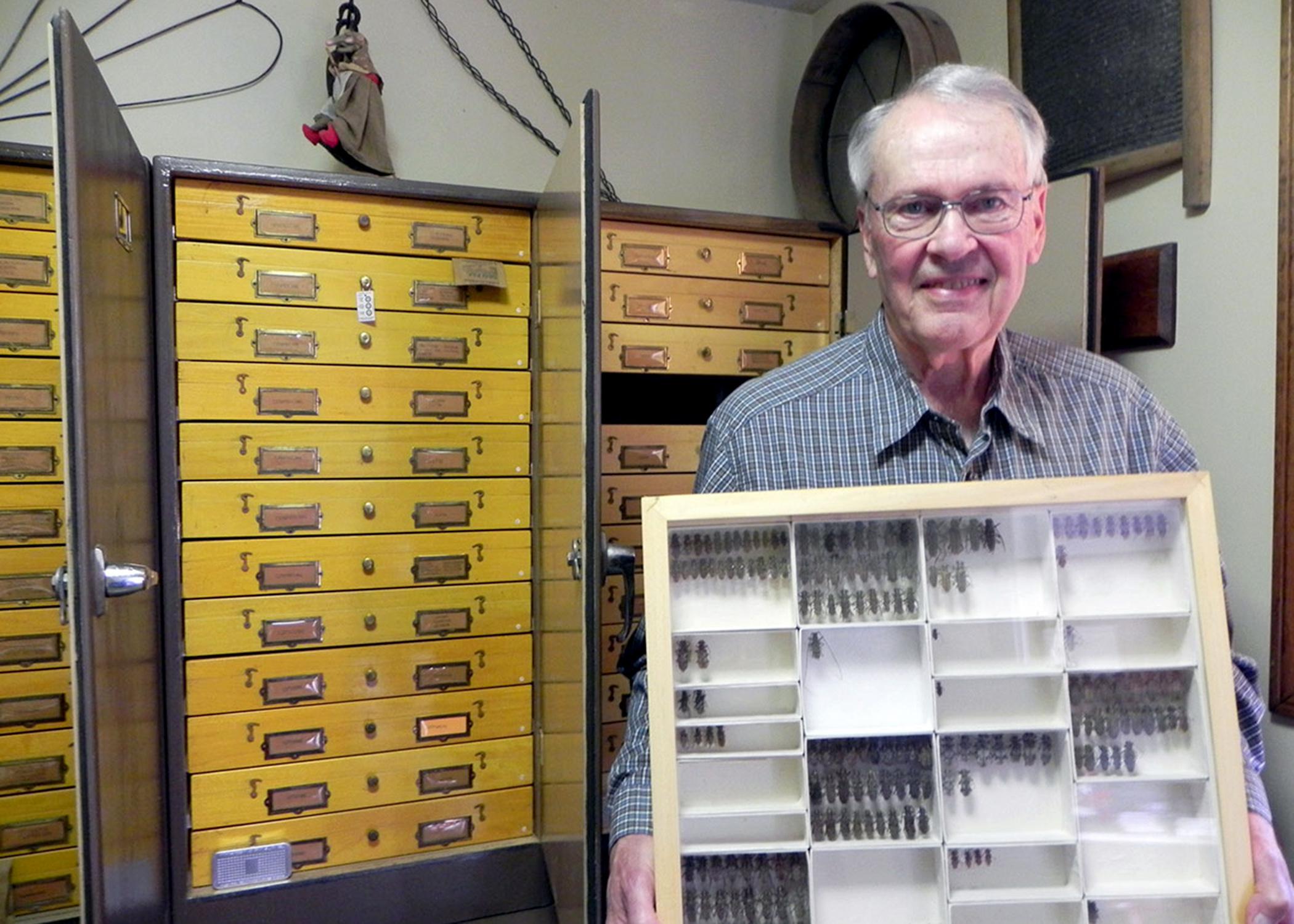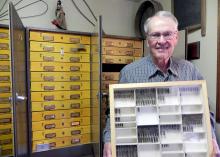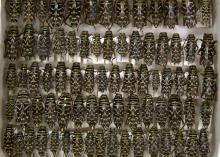Information Possibly Outdated
The information presented on this page was originally released on October 25, 2013. It may not be outdated, but please search our site for more current information. If you plan to quote or reference this information in a publication, please check with the Extension specialist or author before proceeding.
Large donation expands MSU's beetle collection
MISSISSIPPI STATE – A career spent in forestry in the Southeast gave Leon Cambre the opportunity to collect more than 10,000 long-horned beetle specimens that he recently donated to Mississippi State University.
Terence Schiefer, a Mississippi Agricultural and Forestry Experiment Station researcher and curator of the Mississippi Entomological Museum, said the collection came pinned, labeled and organized by species. It is contained in three cabinets holding 36 glass-topped drawers of specimens. The insects were collected over more than 50 years and are now located at MSU.
“The specimens are expertly prepared, and each is labeled with information including where, when and on what host it was collected,” Schiefer said. “The data associated with each specimen is what makes an insect collection like this one valuable for research.
“By comparing the data from many specimens, we can gain an understanding of a species’ geographic distribution, period of adult activity, and its preferred hosts and habitats.”
Long-horned beetles are named for what is actually a pair of long antennae. In many cases, the antennae are longer than the beetle’s entire body. While this is a distinctive feature for most species in this family, it is not the only characteristic needed to make identification.
“Not all long-horned beetles have long antennae, and not every beetle with long antennae is a long-horned beetle,” Schiefer said.
The larvae of most long-horned beetle species feed on woody plants, although some feed on the stems and roots of herbaceous plants. Those that feed on live or stressed trees can be destructive pests, and one species is a pest of soybeans.
“Most species feed on wood of recently dead trees and serve an important ecological role in the forest by aiding in the decomposition of dead, woody plants,” Schiefer said. “They also serve as food for a variety of predators, including woodpeckers.”
Many species that fly during the day are important pollinators, and others are nocturnal.
Although the collection has only single specimens of some rarely collected species, many others species are represented by numerous specimens.
“Just like people, no two individual beetles are alike,” Schiefer said. “Having a series of specimens from a single location allows study of the variation within that population. Multiple specimens from a variety of different locations are needed to study geographic variation between populations.”
The collection has many colorful beetles, including shiny, iridescent species and others with stripes or spots. Many of the nocturnal species have intricate patterns of black, gray and brown, which act as camouflage as the insects rest on trees during the day.
Cambre’s collection includes specimens of the smallest long-horned beetles found in North America, which are less than 1/8 inch long, as well as specimens of large species with antennae more than 4 inches long. There are bright red milkweed beetles often found in Mississippi prairies and pastures, cactus long-horned beetles that only feed on cactus in the West, and red oak borers, a beetle unique in that its 2-year life cycle is synchronized so that adult beetles only appear every other year.
“Long-horned beetles are an interesting, diverse family of insects, which makes them very popular with collectors,” Schiefer said.
Mississippi has more than 220 long-horned beetle species. There are about 1,100 long-horned beetle species in North America and about 20,000 species in the world.
The Cambre collection contains 564 species. While most are from the Southeastern states where Cambre lived and worked, the collection also includes excellent representation of long-horned beetles found in the rest of the continent, Schiefer said.
Cambre, now retired and living in Rolla, Mo., is a 1958 graduate of MSU. He earned his degree in forest management, and his career moved him and his family across the Southeast. He began collecting beetles while in college.
“As an undergraduate student, I had a high enough grade point average to take a graduate course my senior year,” Cambre said. “I took advanced taxonomy from Dr. [E.W.] Stafford, a professor emeritus who was a world authority on bird lice.”
Collecting long-horned beetles tied in nicely with his career in the U.S. Forest Service. While the majority of his career was spent in forest management, Cambre served at one point as a forest entomologist for eight Southeastern states.
Very early in his career, Cambre discovered a new species of long-horned beetle.
“I went out for a little outing with the family in the Bienville National Forest near Forest, Miss., and on some flowers, I found a species that I couldn’t identify,” Cambre said. “I started looking for more and found them in a few different places.”
Scientists at the University of California described it as a new species, which was named Strangalia cambrei in his honor. It is only known to live in Mississippi.
Cambre is not the only Mississippi Entomological Museum contributor who has discovered a new long-horned beetles species. Schiefer discovered and described a new species, Astylopsis fascipennis, and a new subspecies, Saperda lateralis rileyi, named after a fellow researcher at Texas A& M University.





